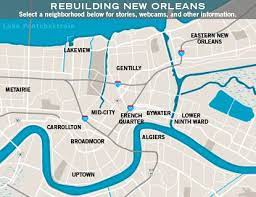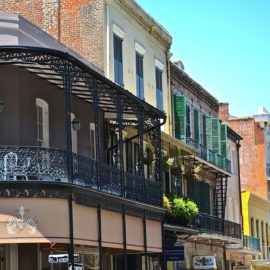
With all the bars and taverns, New Orleans should recycle glass but they don’t. Glass Half Full steps in and while you deliver they recycle it into beads with a number of uses.
When Tulane University alumni Franziska Trautmann and Max Steitz opened Louisiana’s only glass recycling facility, they dreamed of using the crushed sand to help restore the state’s eroding coastline. But they hit a few snags. A lack of funding and need for regulatory approval of their “glass sand” prevented the pair from selling the recycled product for use on the coast. Now, they’re teaming up with a group of Tulane scientists to use a $700,000 National Science Foundation grant to plan their expansion. Since its start last year, the New Orleans-based Glass Half Full has sustained itself mostly on donations and revenue generated by selling sand to industries such as sandblasting and filling up sand bags ahead of storms. So far, they’ve diverted over one million pounds of glass from landfills, pulverizing it in-house. “We haven’t really been able to make money on the sand itself due to how costly it is to produce it right now, but that goes away when we’re producing it at scale,” Trautmann said. “When we get up to producing 20 tons an hour instead of, like 500 pounds an hour, that’s when we’ll be able to drive that cost down to something that’s competitive with dredged sand.”
nola.com
First, the need to determine what the glass beads can be used for. The grant will enable them to do so.
Over the next year, the Glass Half Full team will work with scientists across the engineering and biology fields to conduct a feasibility study. They will review whether the “glass sand” can be used in coastal habitats, determine where it should go to reduce land loss and identify new markets for recycled glass. In Florida, local officials have discussed using crushed glass to replenish their beaches for years but have yet to attempt it on a large scale due to the cost. But as the supply of natural sand diminishes along the Gulf Coast the prospect has become more alluring. A small, preliminary series of tests in 2004 suggested the glass sand could be safe for use, but a larger, $1.4 million experiment was canceled four years later during the Great Recession due to funding. Should the material be deemed safe, lead scientist Julie Albert, of Tulane’s chemical engineering department, said the team doesn’t have enough sand right now to build beaches, but would look to create small ridges in open water that could slow waves and reduce erosion. “A lot of the concrete levees bear the whole brunt of the storm surge,” she said. “If you can bring in natural ridges just outside the concrete levees, you’re going to dissipate that energy. Then, those levees can do more to protect what they’re trying to protect.”
If the glass can be used, more recycling centers would have to be established and closer to the need.
To compete with dredged sand and bolster recycling across the state, Albert and Trautmann said they’re looking at placing new glass recycling facilities in areas where the sand is needed to reduce the cost of transporting material. Shorter travel distances would also lower carbon emissions, which fuel global warming-induced sea level rise — one of the things eating away at Louisiana’s coast. The team hopes to not only have a complete demonstration project, but “a road map” to help others interested in using glass sand for coastal projects, Albert said. The team will work with members of the Pointe-au-Chien Indian Tribe in Terrebonne Parish to look at using the crushed glass to preserve cultural sites endangered by coastal erosion. They also are looking to work with local companies to see where Glass Half Full’s recycled glass could be used to reduce industry costs by replacing materials shipped in from elsewhere such as fillers for concrete. “We want to build bridges between communities that maybe have been at odds with each other in the past,” Albert said. “The community engagement is really important. Whether you just want some sand to fill a pothole or if you’re a company and have a need for sand, we’re happy to work with you.”
If the costs can be brought down and the use on the beaches is confirmed then that would be wonderful. If the glass can be kept out of the dumps that also is wonderful. In other words, a win-win situation.



